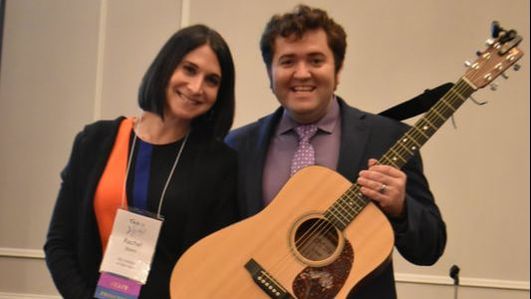Best Buds: Growing Gardens of Students, Learning TogetherThe Talmud clearly states that the Divine Presence dwells with one person who sits and studies Torah (Babylonian Talmud, Berachot 6a). Immediately after giving the scriptural justification for this statement, the Rabbis ask the question, “was it necessary, then, to say that the Divine Presence rests with two people?” They, of course, answer wholeheartedly “Yes!” Their reasoning for saying so is that when two people group study, their names are written in the book of remembrance.
While the statement of reward in the Talmud is about the learner’s deeds yielding results in the World to Come, there is a second reward that goes un-discussed. The learners who learn together, in groups or two or potentially more, have the ability to remember what they’ve learned in new, exciting, and different ways that are unattainable in a solo situation. Now, for group learning and partner learning to work, the situations have to be set up for success. This month’s ISJL Education Newsletter focuses on buddies—how we can utilize the people in our classroom to help them learn with and from one another. We explore how every one of our congregations, whether they have two students or two hundred, can benefit from exploring different types of buddy situations. We analyze the roots of chav’rutah (partner/learning partner) learning, how we can learn from the lifeguarding system known as the Buddy Board, and some best practices for intergenerational buddies. Check it out:
We hope you find this month’s newsletter beneficial and rewarding. We encourage you to find a buddy and explore one of the articles together! Happy December! |
The ISJL Education TeamWe're proud to provide our partners with new monthly resources and enrichment to share with your classrooms and communities! If you have newsletter questions or requests, email Education Director Rabbi Matt Dreffin: [email protected]. Archives
May 2020
Categories |
- Home
- WHO WE ARE
-
WHAT WE DO
- PODCAST
- Conference >
- Education >
-
CULTURE
>
- Culture Overview
- Cultural Programming >
-
History
>
-
Encyclopedia of Southern Jewish Communities
>
- Alabama Encyclopedia
- Arkansas Encyclopedia
- Georgia Encyclopedia
- Florida Encyclopedia
- Kentucky Encyclopedia
- Louisiana Encyclopedia
- Mississippi Encyclopedia
- North Carolina Encyclopedia
- Oklahoma Encyclopedia
- South Carolina Encyclopedia
- Tennessee Encyclopedia
- Texas Encyclopedia
- Virginia Encyclopedia
- Encyclopedia Credits
- Oral History
-
Encyclopedia of Southern Jewish Communities
>
- SPIRITUALITY >
- DONATE
- Shalom Y'all
- Strategic Plan
- Southern & Jewish Blog
- Calendar
- Virtual Press Kit
|
©2024 Goldring/Woldenberg Institute of Southern Jewish Life
|


 RSS Feed
RSS Feed